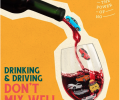CANADIAN AUTOMOBILE ASSOCIATION RELEASES STUDY TO HELP IMPROVE SCHOOL ZONE SAFETY
On 15 June, FIA Member Club the Canadian Automobile Association (CAA) released a report entitled ‘Supporting our Kids on the Journey to School: A CAA School Travel Study’ which lays out best practices in school zone travel policies with the aim of keeping kids safer on their journey to school.

Every day, millions of Canadian families make a journey to and from school. Evidence suggests school zones remain unsafe for many – with nearly 30% of drivers reporting they have witnessed a near miss or collision in a school zone.
“We spent the school year reviewing policies, designs and programmes across Canada,” said CAA National Vice-President of Public Affairs Ian Jack. “Our goal is to empower both policymakers and concerned community members with new facts and ideas that can lead to positive change.”
Methodology
The study, which is the first-of-its-kind in Canada, compares Canadian provinces and territories across 25 specific areas to support safer travel to school and provides real-world examples of safety in action within each jurisdiction. Canada’s provinces and territories have the responsibility for most aspects of school safety, from infrastructure rules and guidelines to speed limits. As such, the focus of the report is on provincial policies and actions.
The CAA retained Urban Systems, a transportation management consulting firm specialised in safe and active school travel, to conduct the study’s research and analysis.
Keeping Children Safe
For decades, the CAA has been advocating for school safety. More than 50,000 children across Canada are involved in the CAA school safety patrol programmes, helping bus drivers get their classmates to and from school safely and directing pedestrian traffic in school zones.
A concerted effort is needed by all those entrusted with children’s safety on their way to and from school – provinces, municipalities, school groups and others – to make sure the journey is as safe as possible. CAA will use the study results to engage in a constructive dialogue with decision makers to help improve school zone safety.
Improving School Safety
The report identifies quick-win interventions that have been shown to improve road safety:
- Adopting a safe passing distance for cyclists to encourage more children to safely cycle to school and therefore reduce traffic congestion in school zones.
- Setting formal goals and targets for road safety and applying consistent monitoring to track progress.
- Leveraging available federal funding, such as the Canada Community Building Fund, Investing in Canada Infrastructure Programme, and recently launched Active Transportation Fund to improve infrastructure systems that support safe school travel.
Following the United States’ example, the Government of Canada could create a national safe school travel partnership with the provinces, staff positions dedicated to children’s safety and mobility, and further support infrastructure improvements arising from the school travel planning process.
More Walking and Cycling
One of the biggest changes in trips to school has been the increase in driving, often for good reasons such as after-school sports or cultural activities. But increased vehicular traffic can lead to more congestion and more danger in school zones. For that reason, this study includes measures to make walking and cycling to school safer as ways to increase school zone safety.

 Facebook
Facebook Twitter
Twitter






